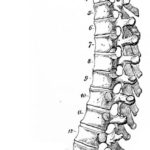Christine Romani-Ruby, MPT, ATC
Christine Romani-Ruby, MPT, ATC
Article Archive
Pilates is touted as one of the most successful methods for increasing core stability and flexibility.
Read MoreMany fitness professionals confuse faulty lordotic posture with swayback posture. Swayback and lordosis appear similar, owing to the concave curve in the back area. However, upon closer look, it is apparent in the lordotic posture that the lumbar spine is concave, while in the swayback posture the low lumbar area is actually flattened. In the swayback posture the concave curve of the spine is much higher in the lower thoracic spine. A fuller understanding of swayback posture can help you retrain clients.
Read MoreMany fitness professionals confuse faulty lordotic posture with swayback posture (Kendall 2005). The scientific definition of swayback refers to posture in which the hips are swayed forward and the rib cage is swayed backward in the sagittal plane (Kendall 2005). Commonly, people picture the swayback of an older horse—which actually more resembles lordotic posture. Upon closer look at joint positions and at muscle length and strength, it is obvious that these postures are different.
Read MoreAs a teacher of the Pilates method, your job is both a science and an art. You want to plan your class scientifically, with a warm-up, a workout and a cool-down. You also want to develop the art of engaging students—because if you can teach them to focus, to do more than just go through the motions, they will leave with a newfound sense of connection between mind, body and spirit.
Read More“It is the spirit that builds the body.” This quote from 18th century German poet Friedrich Schiller was displayed—in its original language—in Joseph Pilates’ New York studio for more than 50 years. Many first-generation teachers who trained with Joe Pilates refer to his studio as a school. They say, “You were there to study movement: to perfect your movement.” In his classroom, Joe was the professor and the subject was the road to happiness (his word for wellness).
Read MorePilates is one of the fastest-growing mind-body offerings and is practiced daily by millions of Americans. In any growing fitness trend that has a rush of new participants, there is also a rush of injuries—and Pilates is no exception. The media tout Pilates as a gentle, nonim…
Read MoreLife constantly presents changes and challenges that promote learning, growth and optimal function. Individuals respond and adapt to these trials differently. When people lose their capacity to cope successfully, they can experience negative stress.
Read More
Methods of strengthening the abdominal muscles have interested both the general public and the fitness industry for years. This interest stems from the desire to have a flat abdomen and from the abdominal muscles’ assumed ability to protect and support the spine. Over the years, abdominal fitness has progressed from the sit-up to the crunch to the pelvic tilt and now to the straight-legged sit-up (roll-up). Unfortunately, many programs developed to strengthen abdominal muscles have contributed to abdominal muscle imbalances and pain syndromes (Sahrmann 2002).
Read More


